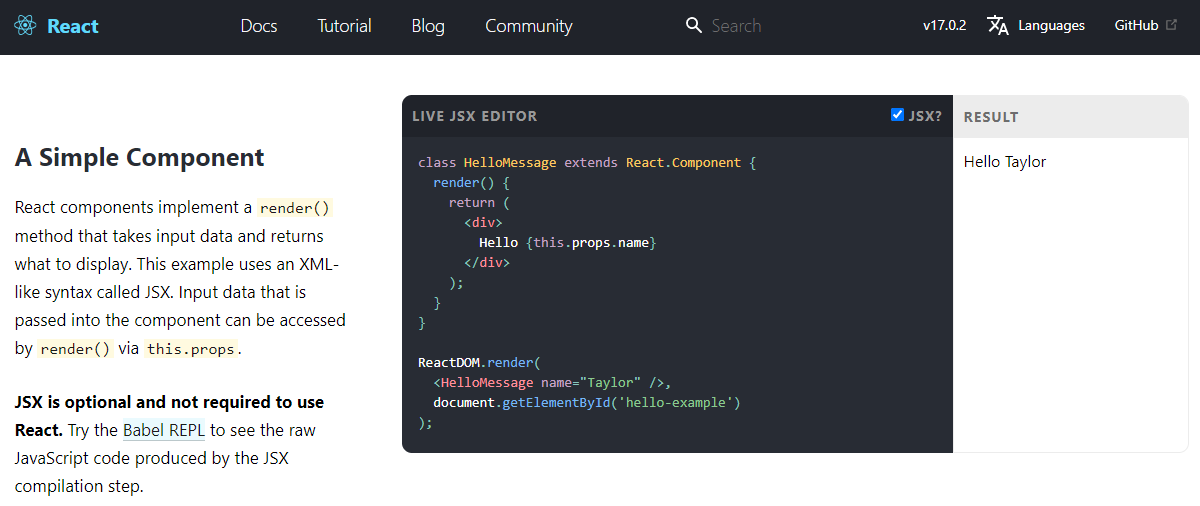In the previous chapter, we saw how React changes the concept of separation of concerns, moving the boundaries inside components. We also learned how React uses the elements returned by the components to display the UI on the screen.
Let's now look at how we can declare our elements inside our components.
React provides two ways to define our elements. The first one is by using JavaScript functions, and the second one is by using JSX, an optional XML-like syntax. The following is a screenshot of the examples section of the official React.js website (https://reactjs.org/#examples):

To begin with, JSX is one of the main reasons why people fail to approach React, because looking at the examples on the home page and seeing JavaScript mixed with HTML for the first time can seem strange to most of us.
As soon as we get used to it, we realize that it is very convenient, precisely because it is similar to HTML and looks very familiar to anyone who has already created UIs on the...

































































